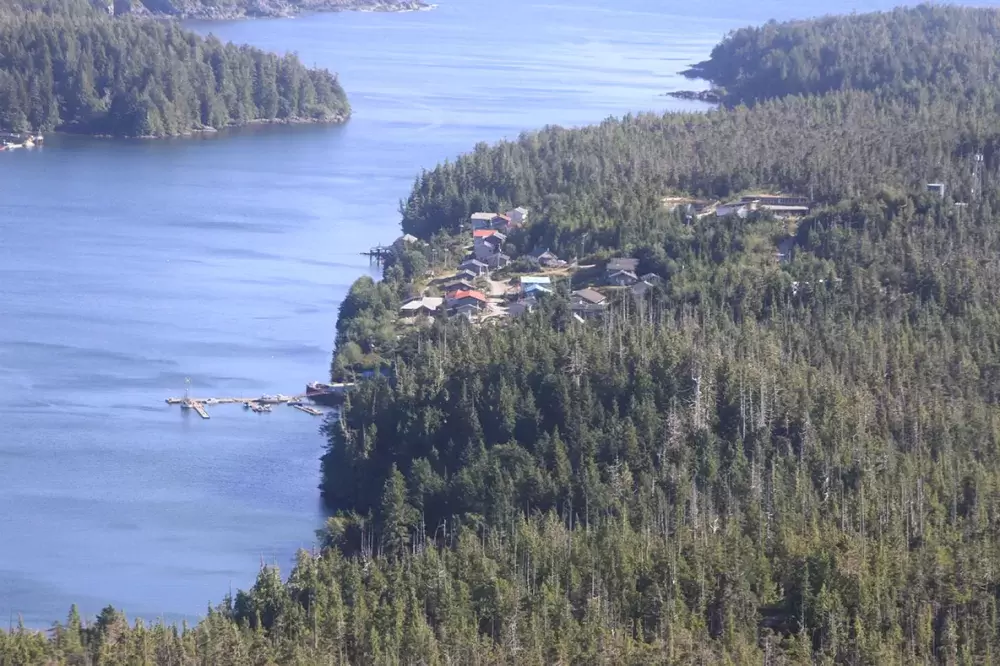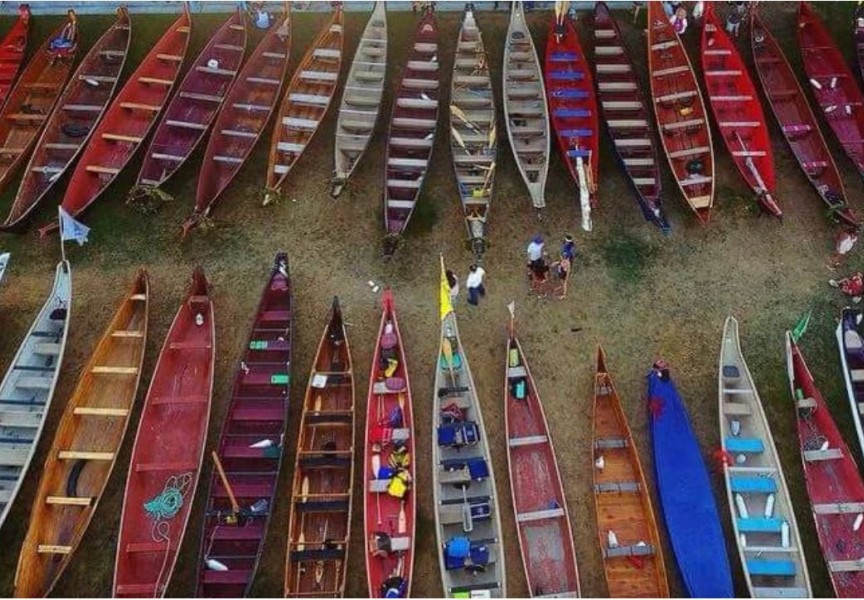Each year more than half a millions dollars in diesel is shipped by barges to generate electricity for the 50 or so people living in Hot Springs Cove.
For the Hesquiaht First Nation north of Tofino, it’s a costly reliance on non-renewable energy. And as Hot Springs Cove is only accessible by boat or airplane, the community’s dependence on diesel generators brings the ongoing risk of running out of power.
This occurred twice in 2016, including on Dec. 29 when a cold spell drained the community’s electricity faster than the First Nation anticipated. To attend to the emergency nine boats were chartered, loaded with 45-gallon barrels of diesel.
The Hesquiaht order a barge every month and a half, but stormy weather hits the cove each winter, blocking access and threatening the chance of fuel supplies making it to the off-the-grid community. Hot Springs Cove has 17 wood-stoves, but many elders rely on electric baseboard heaters to make it through the colder months. Despite filling up the community’s main generators for the winter, diesel regularly runs out, said Chief Councillor Richard Lucas.
“If we order diesel in October [or] November, and it blows and blows and it’s stormy, every December we run out,” he said.
A development is gaining ground that could bring the coastal community closer to self-sufficiency by harnessing hydro power from a nearby water source. The Hesquiaht First Nation is progressing through regulatory hurdles towards a 250-kilowatt generating facility on Ahtaapq Creek, a mainly run-of-the-river hydro project expected to power all of the community’s buildings for most of the year. The project is designed to have a portion of the creek flow into a 16-inch pipe, which then runs two kilometres downhill into a powerhouse to push through a turbine. The water then feeds back into Ahtaapq Creek before it reaches the bay at Hot Springs Cove.
The project is being developed by the Barkley Project Group, a firm that has harnessed hydro power with several other First Nations, including the Tla-o-qui-aht’s larger six-megawatt facilities on Canoe and Haa-ak-suuk creeks.
The hydro project is designed to avoid disturbances to fish and other aquatic life, said Dan Valliquette, the Barkley Project Group’s renewable resource technician. The creek’s minimum flow requirements were determined from years of studying how the project would affect the Ahtaapq during the dry summer period.
“There’s no fish in the upper diversion reach that this project sits,” Valliquette said. “There’s a minimum of that amount of water at all times coming down the creek, and anything above that is deemed useable for power generation.”
“It’s further up where there’s no spawning,” added Les Mickey, a Hesquiaht member who’s been conducting research and collecting data for the project. “Down below where it’s coming down, there’s a waterfall, so fish can’t get up the waterfall.”
The project directly harnesses Ahtaapq’s flows, but also includes a water storage system with 20 hours worth of hydro power. Generation is expected to lessen during the dry summer months, when the Hesquiaht expect they will have to revert back to diesel.
The next step is for the First Nation to receive water rights from the provincial government to use Ahtaapq for power generation.
“That should be within the next few months that we get approval,” said Lucas.
“We would hope to start construction in May of 2018,” said Valliquette, who expects that the project will be built in 10 months. “February or March of 2019 is when the plant could be operational.”
Indigenous and Northern Affairs Canada (INAC) cites at least 175 communities that rely on alternative sources of power to the North American electrical grid or the piped natural gas network. Many of these places depend on diesel generators, including the Nuu-chah-nulth reserves of Hot Springs Cove and Elhlateese in Uchucklesaht territory. But this could soon change with federal backing for the Ahtaapq Creek project, an investment that Valliquette expects might approach $11 million.
“The cost is not in the turbine, in the power capacity – it’s really the infrastructure: the roads, the distribution line, the pen stock, all that is where the costs come in to building these projects,” he said.
“This whole project was initiated by INAC themselves,” said Lucas. “The whole intent is to get us off diesel generators.”
Over the 10 months of construction up to 20 people will be on the job at any given time. As it has with other First Nations, the Barkley Project Group will see if the necessary construction skills can be employed locally.
“There’s going to be a strong emphasis on using the local community and whatever workforce is available,” said Valliquette, citing a 350-megawatt project the company is building with the Wuikinuxv Nation at Rivers Inlet on B.C.’s central coast. “The contractor there is able to use approximately 50 per cent of their workforce as Wuikinuxv members.”
Once operating, people will need to be on hand to ensure the Ahtaapq Creek generator functions effectively, roles that Lucas expects will be filled by the Hesquiaht.
“I imagine there will be two to three jobs out of it,” he said, adding that the project could attract more residents to Hot Springs Cove. “That’s one of our goals, is that more people will move back, but naturally we need the employment too.”







